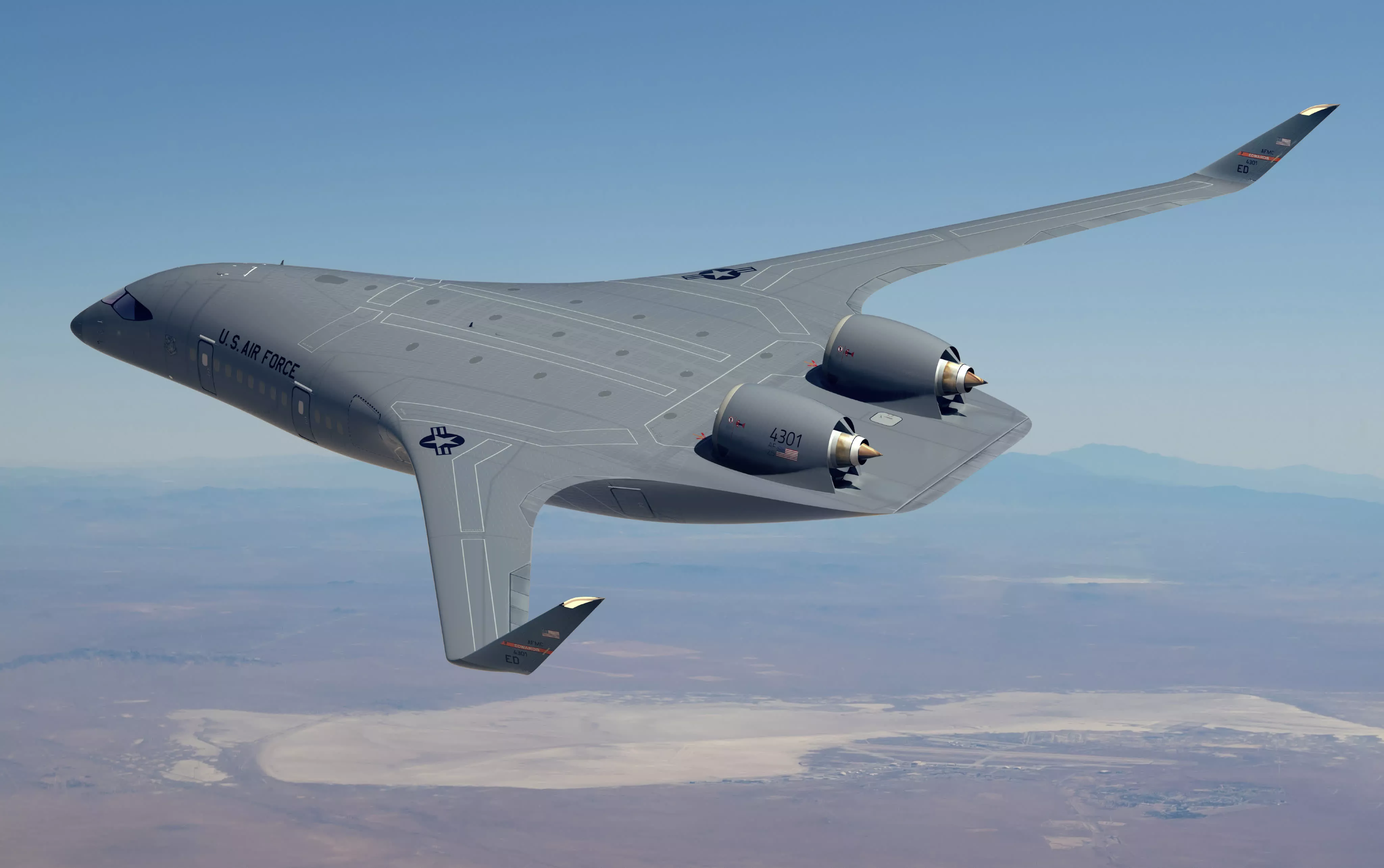Ahead-looking: Whereas industrial aviation has made unbelievable strides in security and effectivity over the many years, passenger jets have stubbornly adhered to the identical elementary tube-and-wing configuration for almost a century. Whereas this structure has confirmed dependable, it’s reaching the boundaries of its potential. With aviation contributing roughly 2.5% of world carbon emissions, many startups at the moment are exploring radical alternate options.
One such firm is JetZero, which, in partnership with engineering giants Siemens and Northrop Grumman, is growing a revolutionary passenger jet design that seamlessly blends the wings into the fuselage.
This idea, often called the “blended wing physique,” is not solely new. It was first proposed over a century in the past by Russian aviator Nicolas Woevodsky. Nevertheless, it has largely remained theoretical, showing solely in a handful of army drone designs.
As soon as typical tube-and-wing airliners turned the usual, the trade resisted change as a result of challenges of certifying a brand new plane form for passenger use. However JetZero believes the potential advantages of the blended wing physique design are too compelling to disregard.
The largest perk of a blended wing physique is its wider, shorter fuselage, which transitions easily into the wings to create a single lifting floor. The startup says this reduces aerodynamic drag by as much as 30% in comparison with a conventional tube fuselage. When mixed with lighter weight and improved engine integration, JetZero claims their design might slash gasoline consumption by 50% in comparison with right this moment’s jets. That is huge.
The blended form additionally permits for extra inside house. JetZero’s idea seats 250 passengers whereas sustaining a smaller total footprint than present single-aisle planes just like the Boeing 737, which holds 215. Noise ranges are anticipated to be considerably decrease as effectively.

Maybe most significantly, JetZero’s design is totally suitable with sustainable aviation fuels and has the potential to run on hydrogen, attaining zero emissions as that expertise matures.
JetZero plans to conduct its first check flight by 2027 and goals to enter industrial service by 2030. Nevertheless, the corporate acknowledges that that is an formidable timeline for bringing such an unconventional design to market. Notably, JetZero has but to determine a producing facility for the plane.
That is the place Siemens comes into play. Introduced at CES 2025, the partnership with Siemens will leverage the corporate’s automation {hardware}, software program, and providers to create a “Manufacturing unit of the Future,” the place the plane might be designed, examined, and iterated upon earlier than last manufacturing.

In parallel, JetZero is collaborating with Northrop Grumman and the U.S. Air Power to develop a subscale prototype referred to as “Pathfinder.” This 23-foot check plane has already validated key aerodynamic ideas and begun real-world flight management testing. Information from Pathfinder will inform the event of the full-scale plane, which might be eight occasions bigger.



